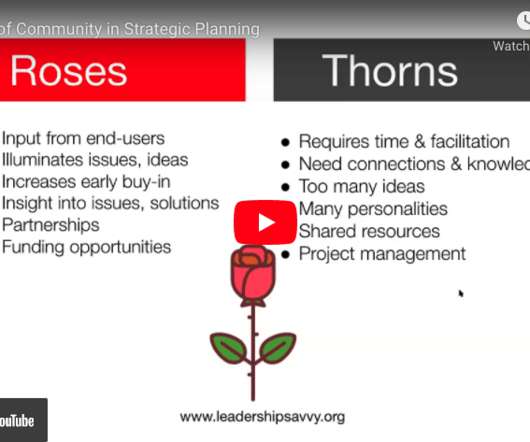Trainer’s Notebook: Just A Few Participatory Facilitation Techniques
Beth's Blog: How Nonprofits Can Use Social Media
JULY 25, 2017
I answered yes to all, but more importantly I think these two methods helped me the most: Carve out time for reflection after each training and do an after-action review with yourself. If time is available, also do a plus/delta exercise with participants as a close out to the session. Measure, evaluate, reflect, and improve.














Let's personalize your content